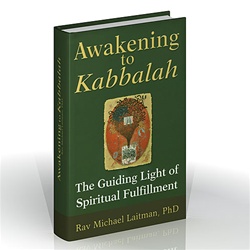Reincarnation According to Kabbalah
In each generation over the past six thousand years, souls have descended that were here on previous occasions. None of us is a new soul; we have all accumulated experiences from previous lives in other incarnations.
Souls descend to earth in a special cyclical order. The number of souls is not infinite; they return again and again, progressing toward correction. The same souls are encased in a series of physical bodies that are more or less the same, but the types of souls that descend are different from one another. This is referred to nowadays as “reincarnation,” but Kabbalists use the term “development of generations.”
The Purpose of Reincarnation and Why Each Generation Is Unique
This intertwining, the connection of the soul and body, assists in the correction of the soul. The human being is referred to as soul, not body. The body itself can be replaced, just as organs can now be replaced. The body is useful only in that it serves as an encasement through which the soul can work. Each generation physically resembles the previous one, but they are different from one another, because each time the souls descend they are imbued with the added experience of their previous lives here. They arrive with renewed strength obtained while they were in heaven.
Thus, each generation possesses different desires and goals from the previous one. This leads to the specific development of each generation. Even a generation that does not reach the desire to know the true reality or a God-like recognition accomplishes the task by the suffering it endures. That is its way of making progress toward the true reality.
How Each Soul Is Really Only a Part of One Collective Soul
All souls are derived from the soul of the first man, Adam ha Rishon. This does not refer to Adam as a mere personality from the Bible. It is a concept of spiritual, inner reality. Parts of the soul of the first human being descend into the world, taking the form of bodies, leading to a connection between body and soul. Reality is directed in such a manner that the souls descend and correct themselves.
The soul of the first human comprises many parts and many desires, some light, others heavy, based on the amount of egoism and cruelty they possess. They come into our world, the lighter ones first, the heavier ones following. Accordingly, their requirements for Tikkun (correction) differ.
How to Gauge the Development of Reincarnated Souls
In their descent into the world, souls have gathered experiences from their suffering. This is called the path of suffering, as these experiences develop the soul. Each time it is reincarnated, a soul has an increased unconscious urge to seek answers to questions about its existence, its roots, and the importance of life.
Accordingly, there are souls that are less developed, and souls that are more so. The latter have such an enormous urge to recognize the truth that they cannot limit themselves to the confines of this world. If they are given the right tools, the proper books and instruction, they will attain recognition of the spiritual world. Kabbalah also describes the descending souls as either pure or less refined. It is a measurement in direct proportion to how much the souls require correction. Souls requiring a greater correction are considered less refined.
Why Each Generation has Special Souls in It
As different souls descend, they require guidance unique to that specific generation. This is why in each generation there are people who lead us in our spiritual progress. They write books and form study groups to convey the method for discovering reality that is most suited to that generation. Before the soul of Ari appeared, there was an era of experience-gathering and perseverance in this world. The souls’ existence was sufficient to make progress toward correction. The suffering they accumulated added urgency to their need to achieve correction. The desire to leave their suffering behind was the motivating force behind the development of the generations.
That era continued until the 16th century, when the Ari appeared and wrote that from his generation onward, men, women, and children in all the nations of the world could, and were required to, engage in Kabbalah. The time had arrived in the development of the generations in which souls descending into the world were able to recognize the true reality and were ready to complete their correction by the special method the Ari had developed. They could now achieve what was required of them.
How Continued Reincarnation Builds an Ever Greater Desire for Spirituality
Souls have but one desire while existing within physical bodies: to return to their roots, to the level they were at before their descent. Physical bodies, with their desire to receive, pull the souls back into this world. People consciously wish to rise spiritually. The great effort spent on the friction created by this dichotomy is what assists them in rising 620 times above their previous level. If a soul does not complete its task in one lifetime, the next time it descends into the world, it will reincarnate more deserving of correction.
Sometimes, we believe that we should deny our desires and longing so that in the next reincarnation we will be more successful. We think we should not desire anything except a little food and to lie idly in the sunlight, as would a cat. However, the contrary is true. In the next round, we will be even more cruel, demanding, exacting, and aggressive.
The Creator wants us to be filled with spiritual pleasure, to be complete. That is possible only through a great desire. Only with a corrected desire can we truly reach the spiritual world and become strong and active. If our desire is small, while it cannot do great harm, it also cannot do much good. Desire is called corrected only when it functions out of the proper influence. It does not exist in us automatically, but is acquired while studying Kabbalah in the correct manner.
 “Finally, the Science behind Reincarnation” is based on the book, Awakening to Kabbalah: The Guiding Light of Spiritual Fulfillment by Dr. Michael Laitman.
“Finally, the Science behind Reincarnation” is based on the book, Awakening to Kabbalah: The Guiding Light of Spiritual Fulfillment by Dr. Michael Laitman.
![]() Start Your Kabbalah Studies Here: Take a Free Kabbalah Course »
Start Your Kabbalah Studies Here: Take a Free Kabbalah Course »

